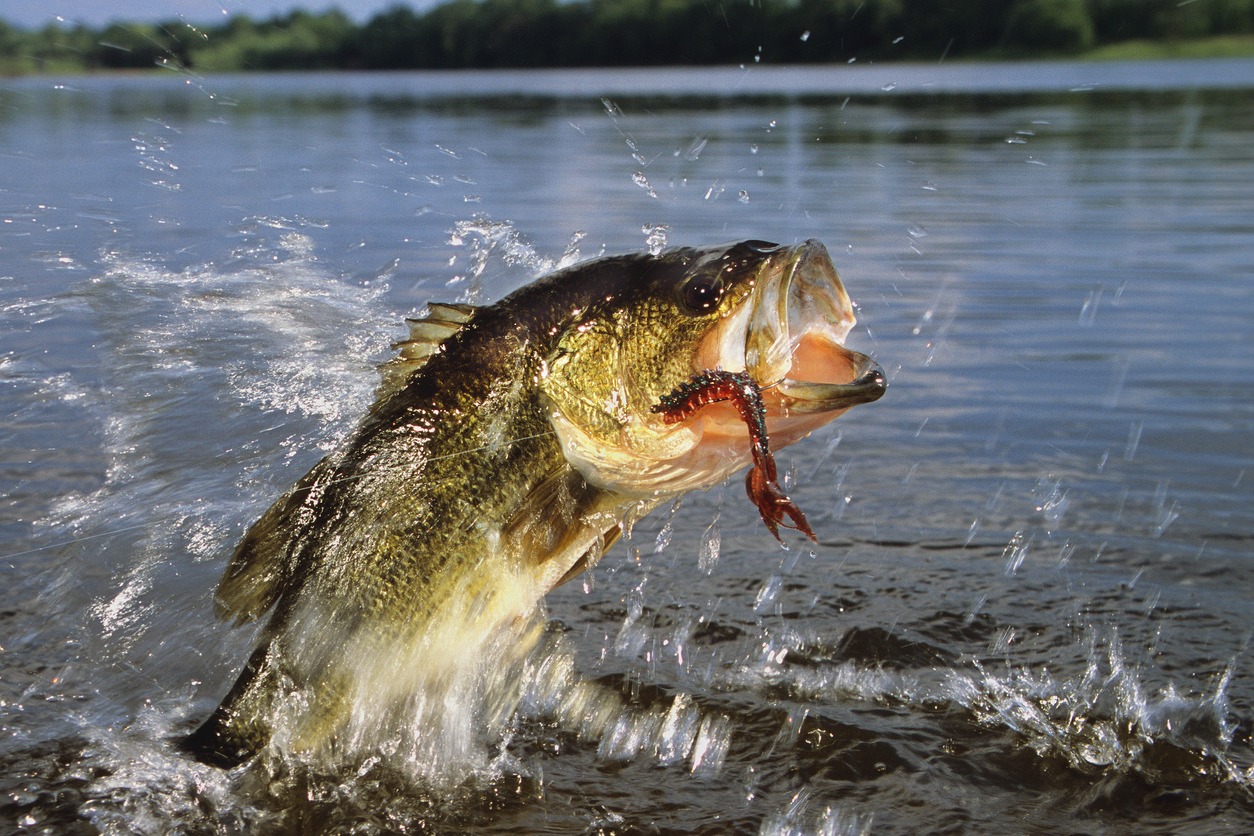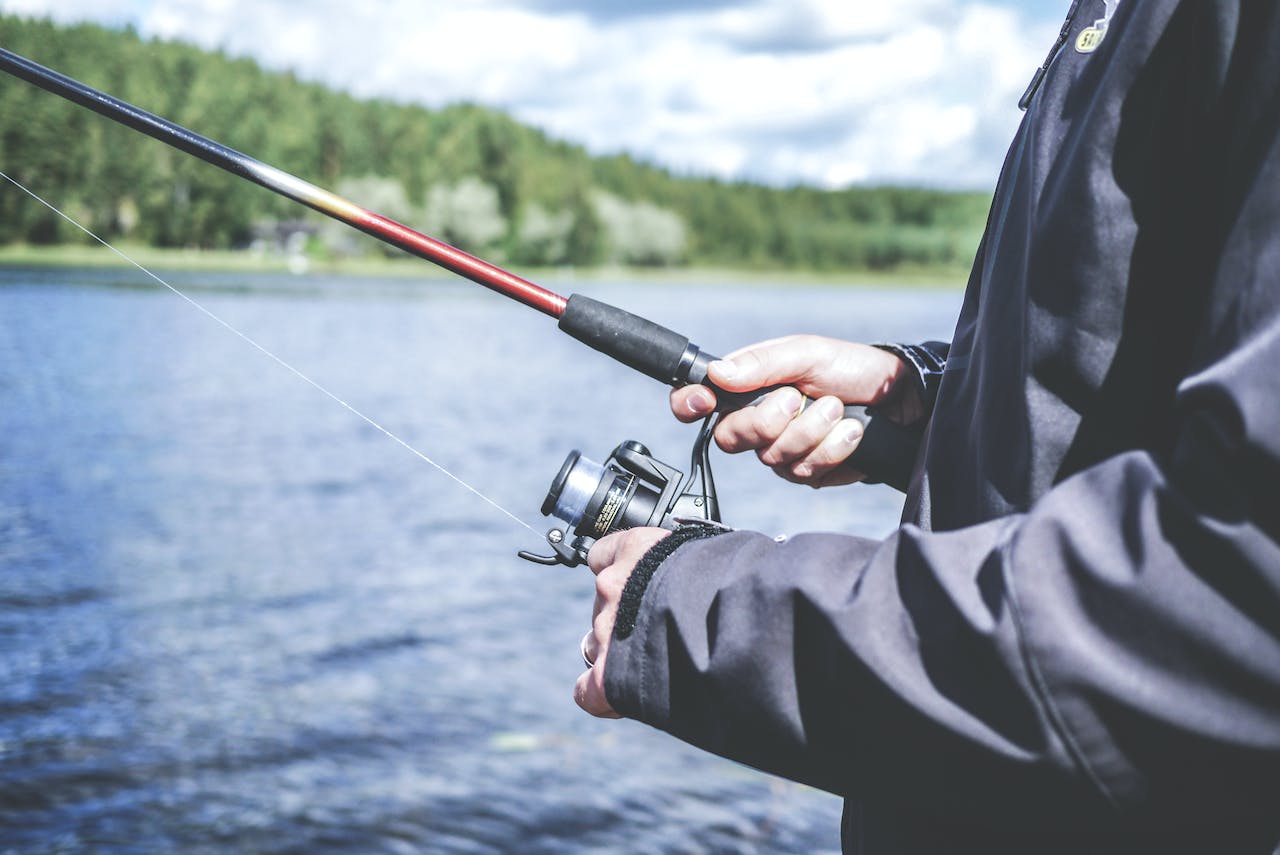Learn the Different Types of Bass
When you delve into the exciting world of bass fishing, it’s essential to familiarize yourself with the different types of bass you might encounter. Each type has its unique characteristics, habitats, and behaviors, making bass fishing a diverse and rewarding experience. Here’s a closer look at the various types of bass:
1. Smallmouth Bass
Appearance: Smallmouth bass are known for their striking bronze or brownish coloration with dark vertical bands. They have a smaller mouth compared to their largemouth counterparts.
Habitat: Smallmouth bass thrive in clear, cool waters such as rivers, streams, and lakes. They prefer rocky structures and submerged vegetation.
Behavior: Smallmouth bass are renowned for their spirited fights when hooked. They are often considered more aggressive and acrobatic than largemouth bass, making them a favorite among anglers seeking a challenge.
2. Largemouth Bass
Appearance: Largemouth bass are easily recognizable by their distinctive large mouths, which extend past their eyes. They typically have a greenish coloration with dark horizontal stripes along their sides.
Habitat: Largemouth bass are adaptable and can inhabit a wide range of water bodies, including ponds, lakes, rivers, and reservoirs. They tend to seek shelter among aquatic plants and submerged structures.
Behavior: Largemouth bass are known for their voracious appetites and aggressive strikes. They often lie in wait, lurking near cover to ambush their prey. These bass can grow to impressive sizes, making them a sought-after catch for anglers.
3. Striped Bass
Appearance: Striped bass, also known as “stripers,” feature prominent dark stripes running horizontally along their silvery bodies. They have two distinct dorsal fins, and their size can vary significantly.
Habitat: Striped bass are unique in that they can inhabit both freshwater and saltwater environments. They are commonly found along the Atlantic Coast and in major river systems.
Behavior: Striped bass are known for their strong swimming abilities and migratory patterns. Anglers often target them in both freshwater and saltwater, and they are prized for their size and fighting spirit.
4. Rock Bass
Appearance: Rock bass are smaller in size, typically growing up to about 7-8 inches in length. They have a reddish or bronze coloration and may display faint vertical bars on their sides.
Habitat: Rock bass prefer clear, cool waters with rocky bottoms. They are often found in streams, rivers, and lakes and are known for their adaptability to various aquatic environments.
Behavior: While rock bass may not reach the size of other bass species, they are known for their aggressive feeding habits. Anglers appreciate their willingness to bite, making them a fun catch for all skill levels.
5. Black Sea Bass
Appearance: Black sea bass have a unique appearance with a dark brown or blackish coloration and distinctive white spots on their bodies. They are typically found in saltwater environments.
Habitat: Black sea bass inhabit coastal waters along the Atlantic Coast and Gulf of Mexico. They are often associated with rocky reefs, wrecks, and underwater structures.
Behavior: Black sea bass are popular among saltwater anglers for their delicious flesh and the challenge they offer. They are known for their preference for structure-rich habitats, where they can be found in schools.
Each type of bass presents its own set of challenges and rewards for anglers. Whether you’re pursuing the acrobatic smallmouth bass, the hefty largemouth bass, or the migratory striped bass, understanding their habitats and behaviors is key to a successful day on the water. So, gear up, explore various fishing locations, and enjoy the thrill of bass fishing in all its diversity.
Essential Gear for Bass Fishing
Bass fishing is as much about strategy and technique as it is about having the right gear. Whether you’re a seasoned angler or just starting, having the essential gear is paramount to your success on the water. Here’s a detailed look at the gear you’ll need for a productive bass fishing experience:
1. Reel and Rod
Your choice of reel and rod is the foundation of your fishing setup. When selecting these components, consider the following:
- Reel Type: Opt for a baitcasting reel or a spinning reel, depending on your preference and experience level. Baitcasting reels offer more control but have a steeper learning curve, while spinning reels are user-friendly for beginners.
- Rod Length and Action: Choose a rod length and action that suits the type of bass fishing you’ll be doing. Longer rods provide better casting distance, while shorter rods offer more accuracy. The action (fast, medium, or slow) determines how the rod bends and affects your hook-setting ability.
- Rod Power: Select the rod power (light, medium, or heavy) based on the size of the bass you’re targeting. Light power rods are suitable for smallmouth bass, while heavy power rods are ideal for largemouth bass and larger species.
2. Live or Fake Bait
Bass can be selective eaters, so having a variety of bait options is essential. Consider the following bait choices:
- Live Bait: Live bait such as minnows, shad, worms, or crayfish can be highly effective for enticing bass. It’s essential to keep your live bait fresh and lively to attract the attention of hungry bass.
- Soft Plastic Lures: Soft plastic lures in the form of frogs, crayfish, and lizards are excellent for mimicking live prey. They come in various sizes, colors, and shapes, allowing you to match the local forage and conditions.
- Crankbaits: Crankbaits are hard-bodied lures designed to resemble small fish or shad. They are effective for covering a lot of water quickly and triggering aggressive strikes.
- Spoons: Spoon lures mimic the flash and movement of baitfish. They are particularly attractive to bass in open water and can be used in various retrieval styles.
3. Fishing Line
Selecting the right fishing line is crucial for bass fishing success. Consider the following options:
- Monofilament Line: Monofilament is a versatile choice suitable for most bass fishing situations. It has good knot strength and is forgiving for beginners.
- Fluorocarbon Line: Fluorocarbon line is nearly invisible underwater, making it ideal for clear water conditions. It has low stretch and excellent sensitivity, allowing you to feel even subtle bites.
- Braided Line: Braided line offers exceptional strength and sensitivity. It’s suitable for heavy cover situations where you need to haul bass out of thick vegetation.
4. Fishing Net
A reliable fishing net is essential for safely landing your catch. Look for a net with a sturdy handle and a knotless, fish-friendly mesh to minimize the risk of hook entanglement.
5. Hooks
Having a selection of hooks in various sizes and types is vital for adapting to different bait and fishing conditions. Choose hooks that match the size of your bait and the size of the bass you’re targeting.
With the right gear in your arsenal, you’ll be well-equipped to tackle various bass fishing scenarios. Whether you’re casting for smallmouth or largemouth bass, experimenting with different bait presentations, or fishing in diverse environments, having the essential gear ensures you’re prepared for a successful and enjoyable day on the water. So, grab your gear, hit your favorite bass fishing spot, and get ready for the thrill of the catch!
Strategies for Bass Fishing
Now that you’re armed with the right gear, it’s time to develop effective strategies for catching bass:
Locate their Habitat
Knowing where bass dwell is half the battle. Bass are commonly found in lakes, ponds, reservoirs, and rivers. Look for areas with adequate cover, such as submerged rocks, fallen trees, and aquatic plants. These serve as hiding spots for bass as they ambush their prey.
Choose Your Bait Wisely
Bass are discerning predators, so your choice of bait matters. Assess the water conditions and the type of baitfish in the area. Soft plastic frogs, crayfish, and lizards are excellent choices for mimicking live prey, especially in weedy areas. Crankbaits and spoons, which resemble shad, can be effective in clear or murky waters. Consider using bait that produces vibrations or rattles when visibility is low, as this can attract bass.
Feel the Wind
Wind can be your ally when bass fishing. On windy days, position your bait away from fish ripples caused by the wind’s current. Bass tend to swim with the current, making it easier for them to come to your bait. Listen for water splashes near your boat, as this may indicate bass feeding in the area.
Fish Shallow Waters in the Spring
During the spring breeding season, bass move to shallow areas, including protective coves. These are prime locations for bass fishing, as hungry bass aggressively bite bait in these areas. Look for coves sheltered from the wind, where bass may be guarding their eggs. Springtime in these coves can yield frequent and easy bites.
In conclusion, bass fishing is an exhilarating pursuit that requires the right gear and effective strategies. Understanding the types of bass, selecting appropriate gear, and employing the right tactics will greatly enhance your chances of reeling in these captivating underwater adversaries. So, grab your gear, hit the waters, and get ready for an unforgettable bass fishing experience.
Additional Tips
- Check out options for swimbaits
- Be sure to check out the best Baitcasting Reel Under $100
- Learn to locate where the bass lives
Final Thoughts
When deciding to go bass fishing, keep in mind that the most essential part of this trip is to enjoy yourself. Make many practicing opportunities during the process as well. In due time, you will figure out all the shortcuts and ways to get bass easily. If you’re a beginner, following the tips and guidelines listed above can help you be prepared for most issues that may occur.


